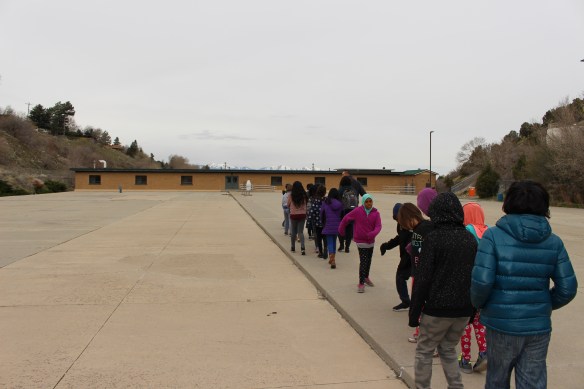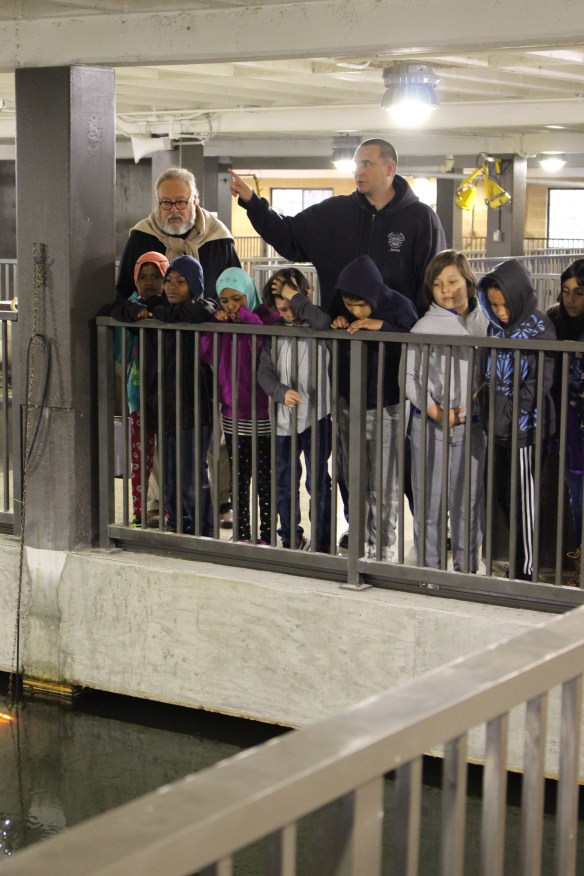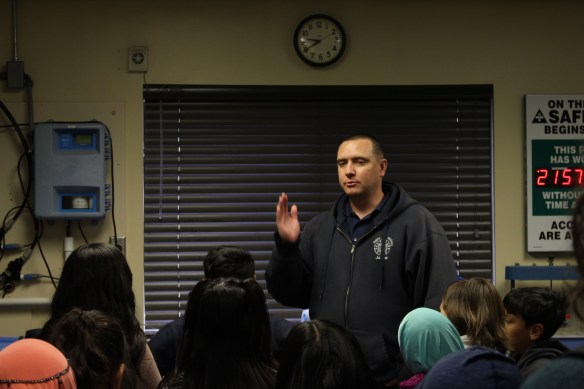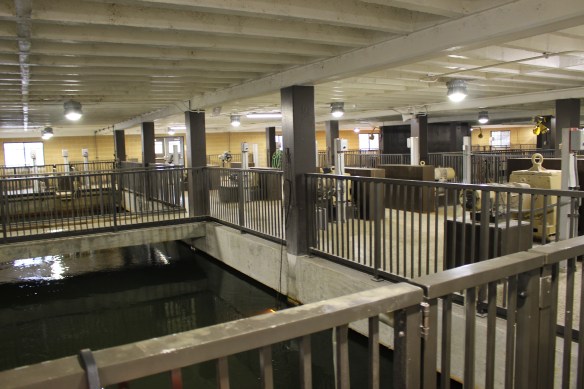Story and Photos By: JAKE PHILLIPS
Patrick Shea’s beard was wet.
It was an oddly fitting picture of the former director of the Bureau of Land Management, who despite being out of government for 20 years, has water on his mind a lot these days. It was a rainy Thursday morning, and Shea, 70, was strolling to class.
Not on the University of Utah campus, where he’s been a research professor of biology and taught a class on urban streams for years, but at a local elementary school.
Every Thursday morning Shea teaches a class on water to fourth graders at Rose Park Elementary School in Salt Lake City. He arrived to a roomful of damp students who had just returned from recess.
As their teacher, Hannah Dolata, instructed her students to find their seats, Shea dried off his bushy white beard. He asked them what they had learned the previous week. The students couldn’t wait to tell him about the written equation they’d learned that showed how much water they used when showering or teeth brushing.
One student proudly exclaimed that if he brushed his teeth with the water running for three minutes and showered for 10 minutes he would have had used 52 gallons of water in the process.
“I try to conserve water every day because my grandma complains about the water bill,” said Valentine, 9.
Shea then asked the students what they should do after wetting their toothbrushes.
“Turn off the water!” the students yelled in unison.
While most elementary school students learn about the water cycle, Dolata’s fourth-grade class at Rose Park Elementary School is getting a much more in-depth education about water and how it affects them. With Utah’s less-than-abundant water supplies and growing population, water conservation has become more important than ever.
Salt Lake is winning water conservation fight
Around 33 percent of Utah is considered to be true desert, meaning the state receives 5 to 8 inches of precipitation annually, according to Utah’s Comprehensive Weather Almanac. The heavily populated Wasatch Front receives around 15 inches of precipitation annually.
Along the Wasatch Front, Salt Lake City appears to be winning in its fight to conserve water. According to the 2014 Salt Lake City Water Conservation Master Plan, conservation has exceeded expectations and the overall trend is a reduction in water use in the area. Classroom programs like Shea’s are crucial in these efforts, the city’s Department of Public Utilities said.
Yet, with climate change and other environmental concerns an increasing reality to students both in childhood and their future adulthood, it’s especially important to teach children today about ways to address these issues, Dolata said.
While Salt Lake City has responded to calls to conserve water, planners expect the city will need to do more in the future. According to a University of Utah study conducted in 2017, the state population is expected to grow from 3.2 million to 3.9 million by the year 2030, an increase of about 22 percent.
If Salt Lake residents continue to use water at the same rate they did in 2000 Salt Lake City’s water usage is expected to increase by 23 percent by 2030, according to the Salt lake City Department of Public Utilities.
Shea asked the students about where the water they use every day comes from. He explained the majority of water in Utah comes from snow in the canyons. Then the children attempted to name some of the canyons near Salt Lake.
The class’ homework assignment was to look at the weather and to document whether it was an accurate report.
“The biggest problem for you growing up is figuring out what is true and is not true,” Shea said.
A different kind of ‘water bucket’ challenge
Shea wasn’t totally out of his element. It had been five years since he had last taught elementary students about proper water usage.
The daughter of a colleague, who Shea worked with on state water laws, was teaching fourth graders and challenged the research professor to speak to her class.
Hesitant at first, Shea said he’s come to enjoy the experience.
“The students are like sponges and want to learn more,” he wrote in an email.
A few weeks later, the professor was back, this time leading a field trip to a water treatment plant up Big Cottonwood Canyon. With Shea was Jacob Maughan, treatment plant operator, who led a tour of the plant and explained how the facility purifies water to make it potable. From there, the energetic children then returned to their bus and traveled to City Creek Canyon.
At City Creek Canyon, a popular biking and hiking destination for Salt Lake residents, the students were met by John Wells, who manages the city’s watershed operations. With students trailing behind, Wells led the class on a walk up a winding, paved canyon road while explaining why it’s important to protect the watershed.
He told students that dogs are not allowed in the canyon to protect the water quality in the streams that the city depends on. As the students fidgeted and chatted, Dolata, their teacher, stressed the importance of showing students the real-life connection to the water cycle.
“In fourth-grade science they’re learning about Utah science and start to connect what they’re learning to the world,” she said. They “see themselves as scientists.”

Hannah Dolata and her class overlook a water storage unit and the Salt Lake Valley.

Dolata’s class walk across a concrete platform that serves as water storage at the Big Cottonwood Water Treatment Plant.

Patrick Shea looks on as Jacob Maughan explains how snowmelt is cleaned and transformed to drinking water.

Maughan telling the students what chemicals are added to unclean water to make it potable.

Maughan advises students to be cautious in his lab, because there are dangerous chemicals present.



Dolata and her class watch water spill over a weir used to control water flow and filter out solid matter.
